Page List
 Please visit our website, www.garethstevens.com. For a free color catalog of all our high-quality books, call toll free 1-800-542-2595 or fax 1-877-542-2596.Cataloging-in-Publication Data
Please visit our website, www.garethstevens.com. For a free color catalog of all our high-quality books, call toll free 1-800-542-2595 or fax 1-877-542-2596.Cataloging-in-Publication Data Names: Mahoney, Emily. Title: 20 fun facts about Tenochtitlan / Emily Mahoney. Description: New York : Gareth Stevens Publishing, 2020. | Series: Fun fact file: world wonders! | Includes glossary and index. | Mexico--History--Conquest, 1519-1540--Juvenile literature. | Templo Mayor (Mexico City, Mexico) -- Juvenile literature. | Templo Mayor (Mexico City, Mexico) -- Juvenile literature.
Classification: LCC F1219.73 M32 2019 | DDC 972.018--dc23 First Edition Published in 2020 by Gareth Stevens Publishing 111 East 14th Street, Suite 349 New York, NY 10003 Copyright 2020 Gareth Stevens Publishing Designer: Sarah Liddell Editor: Kristen Nelson Photo credits: Cover, p. 1 (main) DEA PICTURE LIBRARY/Contributor/De Agostini/Getty Images; file folder used throughout David Smart/Shutterstock.com; binder clip used throughout luckyraccoon/Shutterstock.com; wood grain background used throughout ARENA Creative/Shutterstock.com; p. 5 Diego Grandi/Shutterstock.com; p. 6 Kgv88/Wikimedia Commons; p. 7 Lepusinensis/Shutterstock.com; p. 9 WitR/Shutterstock.com; p. 10 Joseph Sorrentino/Shutterstock.com; p. 11 Grafissimo/DigitalVision Vectors/Getty images; p. 12 Nastasic/DigitalVision Vectors/Getty Images; p. 13 ZU_09/DigitalVision Vectors/Getty Images; p. 14 DEA/G. 14 DEA/G.
DAGLI ORTI/De Agostini Picture Library/Getty Images; p. 16 Ptcamnommonswiki/Wikimedia Commons; p. 17 Joyborg/Wikimedia Commons; p. 18 Luis Dafos/Moment/Getty Images; p. 19 DEA PICTURE LIBRARY/Contributor/De Agostini/Getty Images; p. 21, 22 Print Collector/Contributor/Hulton Archive/Getty Images; p. 23 Getty Images/Handout/Archive Photos/Getty Images; p. 24 UniversalImagesGroup/Contributor/Universal Images Group/Getty Images; p. 25 steve estvanik/Shutterstock.com; p. 26 Anadolu Agency/Contributor/Anadolu Agency/Getty Images; p. 29 DEA/G. 29 DEA/G.
DAGLI ORTI/Contributor/De Agostini/Getty Images. All rights reserved. No part of this book may be reproduced in any form without permission in writing from the publisher, except by a reviewer. Printed in the United States of America CPSIA compliance information: Batch #CS19GS: For further information contact Gareth Stevens, New York, New York at 1-800-542-2595. CONTENTS Tenochtitln (TEH-noch-tiht-LAHN) was the capital city of the Aztec civilization. The Aztecs had a large empire in central and southern Mexico in the 1400s and early 1500s.
It was a grand capital that showed off their wealth and power. Tenochtitln was advanced for its time. This could especially be seen in what the Aztecs built in their city as it grew. Today, we know many surprising and interesting facts about the citys history. The first is that it existed for less than 200 years! 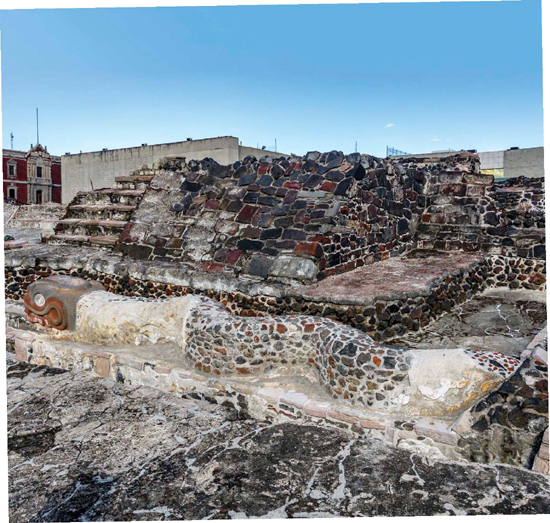 While its in ruin today, Tenochtitln was once a beautiful and large city filled with people. FUN FACT: 1TENOCHTITLN WAS FOUNDED ALMOST 700 YEARS AGO! The Aztecs founded Tenochtitln in 1325.
While its in ruin today, Tenochtitln was once a beautiful and large city filled with people. FUN FACT: 1TENOCHTITLN WAS FOUNDED ALMOST 700 YEARS AGO! The Aztecs founded Tenochtitln in 1325.
Before they settled there, the Aztecs were nomads from the north who often fought other groups in central Mexico as they moved around. They were likely hunters and gatherers. 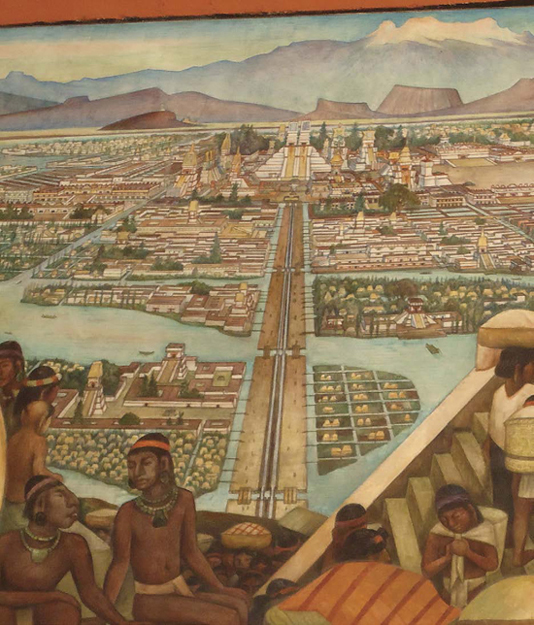 Tenochtitln was named after an Aztec ruler named Tenoch. FUN FACT: 2AN AZTEC STORY SAYS FOUNDERS LOOKED FOR A SIGN FOR WHERE TO BUILD THEIR CITY. One of the Aztec gods told ruler Tenoch in a vision that the place where he saw an eagle sitting on a cactus eating a snake was where he should build the great Aztec city.
Tenochtitln was named after an Aztec ruler named Tenoch. FUN FACT: 2AN AZTEC STORY SAYS FOUNDERS LOOKED FOR A SIGN FOR WHERE TO BUILD THEIR CITY. One of the Aztec gods told ruler Tenoch in a vision that the place where he saw an eagle sitting on a cactus eating a snake was where he should build the great Aztec city. 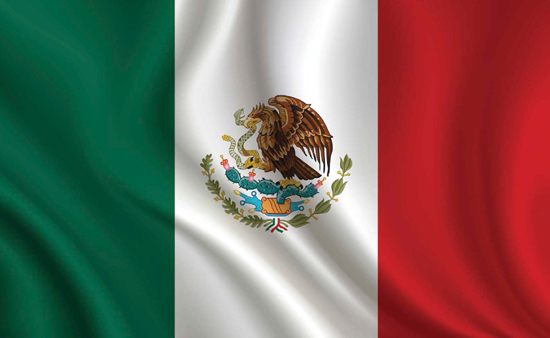 A picture of the story of the founding of Tenochtitln is on the Mexican flag. FUN FACT: 3TENOCHTITLN WAS BUILT ON AN ISLAND. It started as a small village near the western shore of Lake Texcoco in present-day Mexico City, Mexico. FUN FACT: 3TENOCHTITLN WAS BUILT ON AN ISLAND. It started as a small village near the western shore of Lake Texcoco in present-day Mexico City, Mexico.
A picture of the story of the founding of Tenochtitln is on the Mexican flag. FUN FACT: 3TENOCHTITLN WAS BUILT ON AN ISLAND. It started as a small village near the western shore of Lake Texcoco in present-day Mexico City, Mexico. FUN FACT: 3TENOCHTITLN WAS BUILT ON AN ISLAND. It started as a small village near the western shore of Lake Texcoco in present-day Mexico City, Mexico.
By the late 1400s, it was becoming a well-planned city laid out in a grid. Temples and government buildings were found at the citys center. 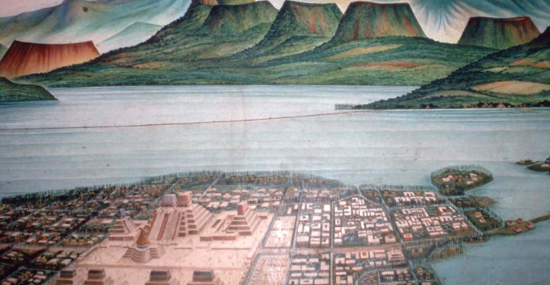 The Aztecs built an aqueduct to carry drinking water to their island. An aqueduct looks like a bridge and carries water from one place to another. FUN FACT: 4TOGETHER, TENOCHTITLN AND TLATELOLCO WERE ABOUT FOUR TIMES THE SIZE OF CENTRAL PARK IN NEW YORK CITY. The Aztec city of Tlatelolco was founded to the north of Tenochtitln.
The Aztecs built an aqueduct to carry drinking water to their island. An aqueduct looks like a bridge and carries water from one place to another. FUN FACT: 4TOGETHER, TENOCHTITLN AND TLATELOLCO WERE ABOUT FOUR TIMES THE SIZE OF CENTRAL PARK IN NEW YORK CITY. The Aztec city of Tlatelolco was founded to the north of Tenochtitln. 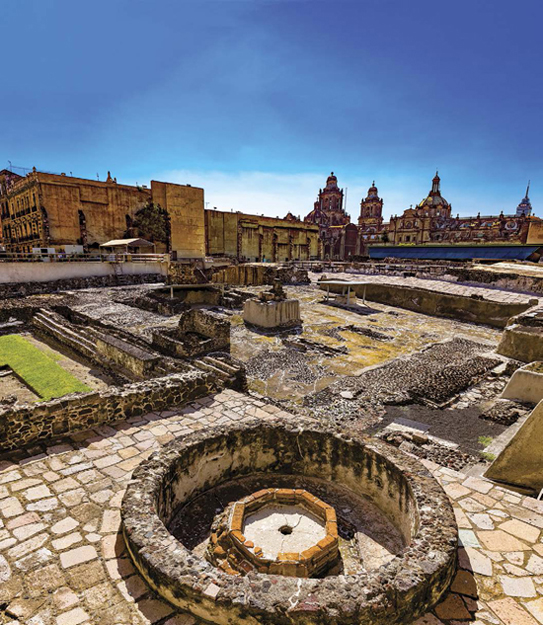 The present-day ruins of Tenochtitln can help to give you an idea of how big the city once was. FUN FACT: 5THE AZTECS FARMED IN THE SWAMPS AROUND TENOCHTITLN. The Aztecs didnt have good farmland on their island. FUN FACT: 5THE AZTECS FARMED IN THE SWAMPS AROUND TENOCHTITLN. The Aztecs didnt have good farmland on their island.
The present-day ruins of Tenochtitln can help to give you an idea of how big the city once was. FUN FACT: 5THE AZTECS FARMED IN THE SWAMPS AROUND TENOCHTITLN. The Aztecs didnt have good farmland on their island. FUN FACT: 5THE AZTECS FARMED IN THE SWAMPS AROUND TENOCHTITLN. The Aztecs didnt have good farmland on their island.
Instead, they built chinampas, or man-made islands, on which to farm. Chinampas were made of mud and dead plants brought up from the bottom of the lake. Farmers even lived in huts on these islands!  Today, chinampas are sometimes simply called floating gardens.
Today, chinampas are sometimes simply called floating gardens. 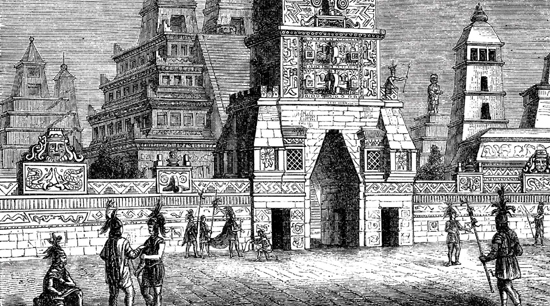 FUN FACT: 6PEOPLE LIVING IN TENOCHTITLN HAD ACURFEW . A warning using either drums or a large conch shell was given around sunset to signal the end of the working day. Everyone had to be inside a few hours later.
FUN FACT: 6PEOPLE LIVING IN TENOCHTITLN HAD ACURFEW . A warning using either drums or a large conch shell was given around sunset to signal the end of the working day. Everyone had to be inside a few hours later.
This made it easier to keep the city safe at night. FUN FACT: 7PEOPLE USED CANOES TO GET AROUND THE CITY OF TENOCHTITLN. As many as 200,000 canoes may have been in use on Lake Texcoco in the early 1500s. The Aztecs used canoes to travel off the island. They also built canals across the island that allowed them to travel throughout the city of Tenochtitln. 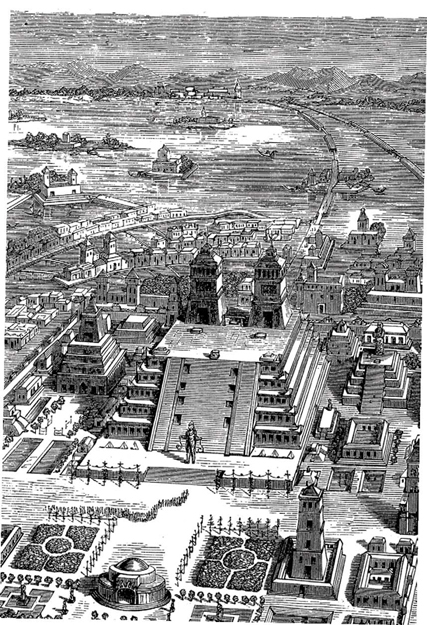 The Aztecs could also cross the swampy water around the island to reach the mainland by using causeways they built.
The Aztecs could also cross the swampy water around the island to reach the mainland by using causeways they built. 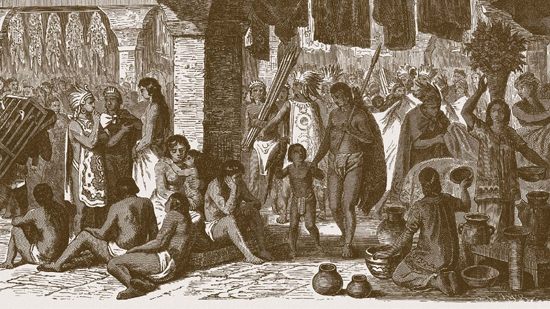






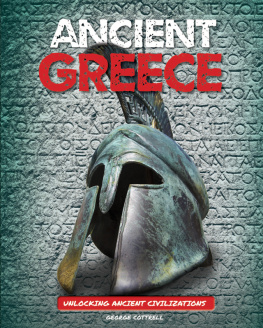

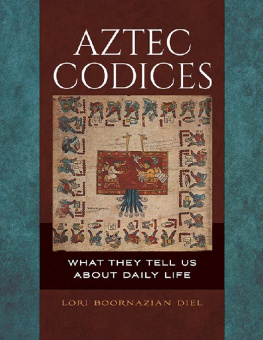
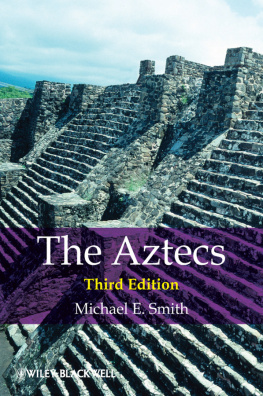

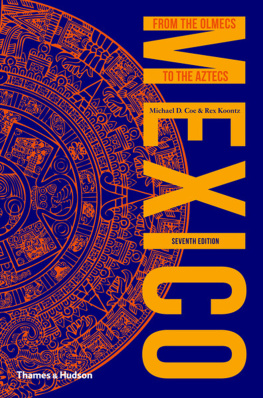
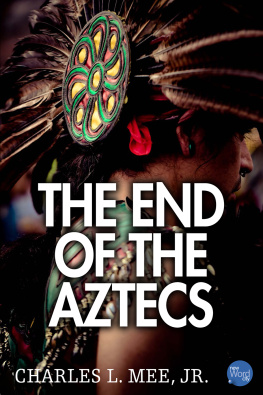
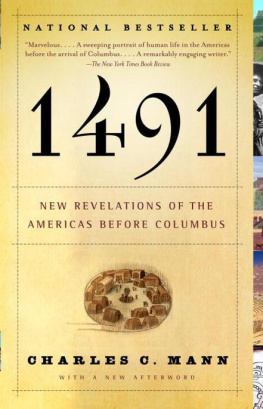

 Please visit our website, www.garethstevens.com. For a free color catalog of all our high-quality books, call toll free 1-800-542-2595 or fax 1-877-542-2596.Cataloging-in-Publication Data Names: Mahoney, Emily. Title: 20 fun facts about Tenochtitlan / Emily Mahoney. Description: New York : Gareth Stevens Publishing, 2020. | Series: Fun fact file: world wonders! | Includes glossary and index. | Mexico--History--Conquest, 1519-1540--Juvenile literature. | Templo Mayor (Mexico City, Mexico) -- Juvenile literature. | Templo Mayor (Mexico City, Mexico) -- Juvenile literature.
Please visit our website, www.garethstevens.com. For a free color catalog of all our high-quality books, call toll free 1-800-542-2595 or fax 1-877-542-2596.Cataloging-in-Publication Data Names: Mahoney, Emily. Title: 20 fun facts about Tenochtitlan / Emily Mahoney. Description: New York : Gareth Stevens Publishing, 2020. | Series: Fun fact file: world wonders! | Includes glossary and index. | Mexico--History--Conquest, 1519-1540--Juvenile literature. | Templo Mayor (Mexico City, Mexico) -- Juvenile literature. | Templo Mayor (Mexico City, Mexico) -- Juvenile literature.  While its in ruin today, Tenochtitln was once a beautiful and large city filled with people. FUN FACT: 1TENOCHTITLN WAS FOUNDED ALMOST 700 YEARS AGO! The Aztecs founded Tenochtitln in 1325.
While its in ruin today, Tenochtitln was once a beautiful and large city filled with people. FUN FACT: 1TENOCHTITLN WAS FOUNDED ALMOST 700 YEARS AGO! The Aztecs founded Tenochtitln in 1325. Tenochtitln was named after an Aztec ruler named Tenoch. FUN FACT: 2AN AZTEC STORY SAYS FOUNDERS LOOKED FOR A SIGN FOR WHERE TO BUILD THEIR CITY. One of the Aztec gods told ruler Tenoch in a vision that the place where he saw an eagle sitting on a cactus eating a snake was where he should build the great Aztec city.
Tenochtitln was named after an Aztec ruler named Tenoch. FUN FACT: 2AN AZTEC STORY SAYS FOUNDERS LOOKED FOR A SIGN FOR WHERE TO BUILD THEIR CITY. One of the Aztec gods told ruler Tenoch in a vision that the place where he saw an eagle sitting on a cactus eating a snake was where he should build the great Aztec city.  A picture of the story of the founding of Tenochtitln is on the Mexican flag. FUN FACT: 3TENOCHTITLN WAS BUILT ON AN ISLAND. It started as a small village near the western shore of Lake Texcoco in present-day Mexico City, Mexico. FUN FACT: 3TENOCHTITLN WAS BUILT ON AN ISLAND. It started as a small village near the western shore of Lake Texcoco in present-day Mexico City, Mexico.
A picture of the story of the founding of Tenochtitln is on the Mexican flag. FUN FACT: 3TENOCHTITLN WAS BUILT ON AN ISLAND. It started as a small village near the western shore of Lake Texcoco in present-day Mexico City, Mexico. FUN FACT: 3TENOCHTITLN WAS BUILT ON AN ISLAND. It started as a small village near the western shore of Lake Texcoco in present-day Mexico City, Mexico. The Aztecs built an aqueduct to carry drinking water to their island. An aqueduct looks like a bridge and carries water from one place to another. FUN FACT: 4TOGETHER, TENOCHTITLN AND TLATELOLCO WERE ABOUT FOUR TIMES THE SIZE OF CENTRAL PARK IN NEW YORK CITY. The Aztec city of Tlatelolco was founded to the north of Tenochtitln.
The Aztecs built an aqueduct to carry drinking water to their island. An aqueduct looks like a bridge and carries water from one place to another. FUN FACT: 4TOGETHER, TENOCHTITLN AND TLATELOLCO WERE ABOUT FOUR TIMES THE SIZE OF CENTRAL PARK IN NEW YORK CITY. The Aztec city of Tlatelolco was founded to the north of Tenochtitln.  The present-day ruins of Tenochtitln can help to give you an idea of how big the city once was. FUN FACT: 5THE AZTECS FARMED IN THE SWAMPS AROUND TENOCHTITLN. The Aztecs didnt have good farmland on their island. FUN FACT: 5THE AZTECS FARMED IN THE SWAMPS AROUND TENOCHTITLN. The Aztecs didnt have good farmland on their island.
The present-day ruins of Tenochtitln can help to give you an idea of how big the city once was. FUN FACT: 5THE AZTECS FARMED IN THE SWAMPS AROUND TENOCHTITLN. The Aztecs didnt have good farmland on their island. FUN FACT: 5THE AZTECS FARMED IN THE SWAMPS AROUND TENOCHTITLN. The Aztecs didnt have good farmland on their island. Today, chinampas are sometimes simply called floating gardens.
Today, chinampas are sometimes simply called floating gardens.  FUN FACT: 6PEOPLE LIVING IN TENOCHTITLN HAD ACURFEW . A warning using either drums or a large conch shell was given around sunset to signal the end of the working day. Everyone had to be inside a few hours later.
FUN FACT: 6PEOPLE LIVING IN TENOCHTITLN HAD ACURFEW . A warning using either drums or a large conch shell was given around sunset to signal the end of the working day. Everyone had to be inside a few hours later. The Aztecs could also cross the swampy water around the island to reach the mainland by using causeways they built.
The Aztecs could also cross the swampy water around the island to reach the mainland by using causeways they built. 